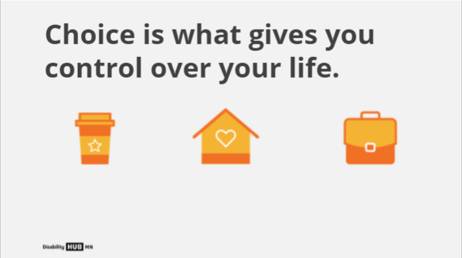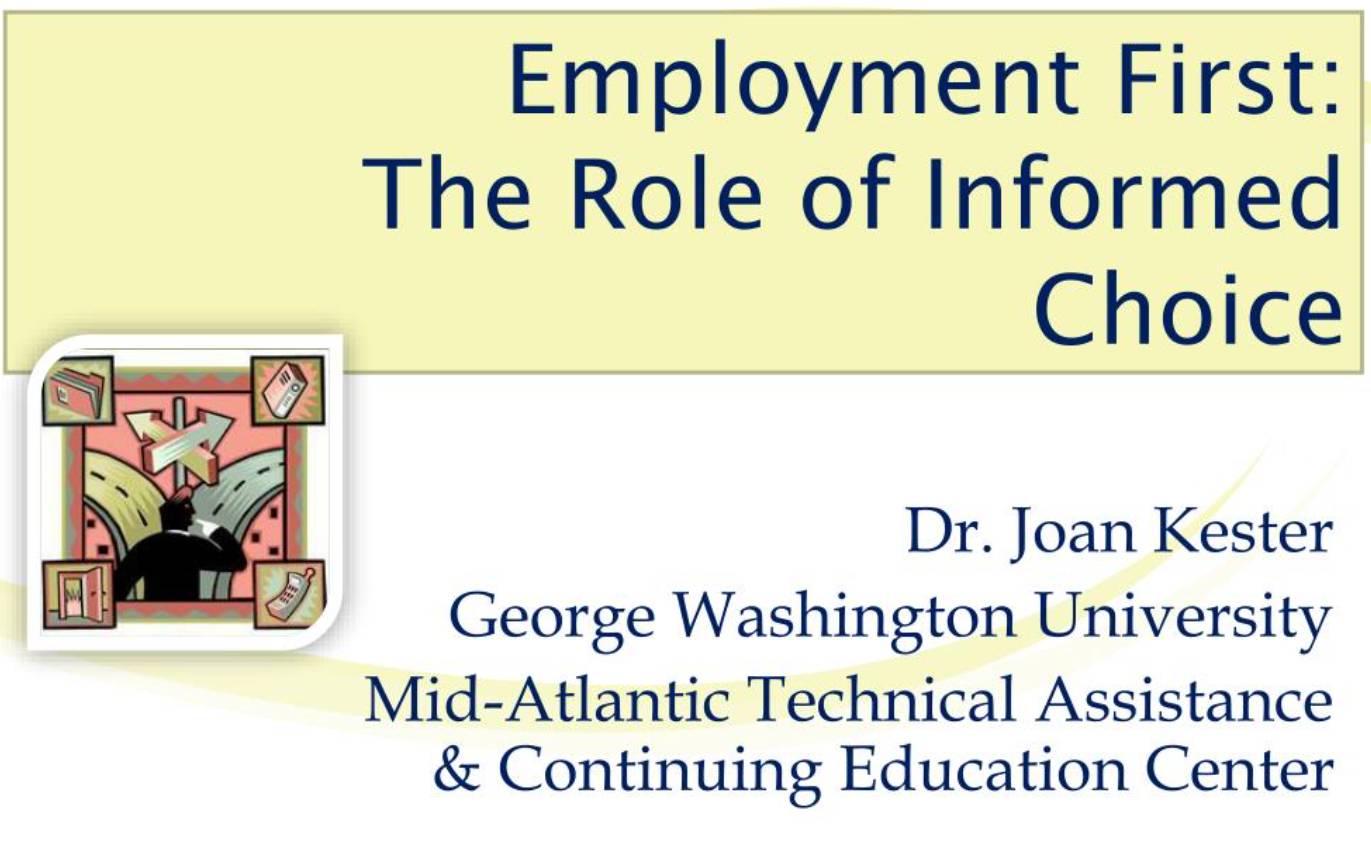Navigation
Empowering Students Introduction
Key Elements
- Supported Decision Making
- Maintaining High Expectations
- ► Making Informed Choices
- Person-Centered Planning
- Social Emotional Learning
Resources: Empowering Students
Informed choice involves making decisions based on relevant knowledge, consistent with the individual’s values, culture, perspectives, and needs. Students with disabilities receive many services. The services available will differ from person to person because they are customized for each individual’s needs. Students need to have the opportunity to have input to services and decisions for adult life. A student having informed choice through transition is extremely important for greater success in exploring careers and is a critical component of vocational rehabilitation. The Rehabilitation Act of 1973 is explicit in its policy statement indicating funding provided through the Act must be delivered in a way to respect the dignity of the person, ensure personal responsibility, promote self-determination, and promote the ability to pursue careers of interest based on informed choice (USDE, OSERS, 2001).
Disability Hub: MN
Disability Hub MN: Everyone has the right to make decisions about their own lives. Increased decision making is associated with a higher quality of life. Some people may need support to determine what's best for them. This toolkit will help provide information on the informed choice standard and how to help people with disabilities lead inclusive lives. It will also provide an introduction to supported decision making tools to help people get the support they need to control their own lives.
Related Learning Activities:
- Watch Introduction to Informed Choice video (30 minutes). This video offers tools and resources to help professionals facilitate informed choice so students better understand community options. Topics covered include the power of choice and control, your role in informed choice, a person-centered process, applying informed choice, and a quiz to assess understanding.
- Review the Informed Choice Toolkit, which contains information on the informed choice standard, supported decision making, and associated resources.
- For additional information, access the related resources at the end of each reading: Choice and Control: Reflections on Informed Choice; Housing Toolkit; Work Toolkit.
Joan Kester, Ph.D., Video Presentation and Resources
Joan Kester, Ph.D., Video Presentation and Resources: Informed choice involves the student and educator working together in an ongoing process to obtain, review, and evaluate information to be used by the individual to make informed choices about goals and services.
Related Learning Activities:
- Watch the Employment First - The Role of Informed Choice video presentation (downloadable PowerPoint presentation, 49 slides). Presentation delivered by Dr. Joan Kester, George Washington University, Mid-Atlantic and Technical Education Center. Presentation covers 4 chapters on informed choice as a legal requirement, guiding principles, national trends, advocacy, research, and more.
- Take the quiz at the end of the video presentation.
Institute for Community Inclusion at UMASS
Institute for Community Inclusion at UMASS: Informed choice assumes all people are able to make choices, and is the process of making choices based on knowledge of the choices and selecting the option you feel is best after considering all aspects of the options. The information included here provides more detailed information and resources about informed choice.
Related Learning Activities:
- Review Tools for Inclusion, Informed Choice and Employment: Overview: a 9-page brief covering the definition, principles, impact on employment, challenges, legal requirement, transition, guardianship, considerations, steps for informed choice, and links to other resources. Also covers roles of the individual, professional, and family members.
- Write down five concepts from the brief you learned more about, or where you gained new knowledge.
- Do you inadvertently use statements that may hinder informed choice? Note two statements you feel are helpful in promoting informed choice?
- Name one way you would use informed choice in transition planning.
Family Engagement
It is very important that individuals with autism learn to make informed choices. This crosses multiple aspects of their lives, including daily living skills such as deciding what to wear, when to eat, how to do laundry, following a hygiene routine, getting ready for work, performing tasks at work, and much more. Individuals with autism may need assistance in developing the skills to make choices and problem solve. The benefits of informed decision-making can allow the individual to increase control over their lives and be more self-confident and independent.
Another aspect of informed decision-making relates to decisions about guardianship. It is vital that families understand there is a transfer of rights from the parent to the individual upon reaching age of majority, which is 18 years of age in Michigan. The student, not the parent, will then have the right to give or deny informed consent to any action by the school. This occurs without any action being taken, so families and the individual need to be informed about options and alternatives to guardianship well ahead of age of majority. The individual can be involved in making decisions about their own lives and futures. Full guardianship is viewed as the form of guardianship requiring full oversight by the named guardian (or conservator). There are alternatives to guardianship which are less restrictive and should be considered. Families need to understand what takes place when their young adult reaches the age of majority if he or she is unable to make their own decisions.
- Center for Parent Information & Resources: Getting Ready for When Your Teen Reaches Age of Majority - A Parent’s Guide; Webinar (includes PowerPoint and Handouts)
- Disability Hub MN: Informed Choice Toolkit
- Michigan Alliance for Families:

Navigation
Empowering Students Introduction
Key Elements
- Supported Decision Making
- Maintaining High Expectations
- ► Making Informed Choices
- Person-Centered Planning
- Social Emotional Learning
Resources: Empowering Students



